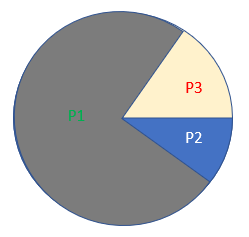Finite State Testing of Graphical User Interface using Genetic Algorithm
Main Article Content
Abstract
Graphical user interfaces are the key components of any software. Nowadays, the popularity of the software depends upon how easily the user can interact with the system. However, as the system becomes complex, this interaction is also complicated with many states. The testing of graphical user interfaces is an important phase of modern software. The testing of GUI is possible only by interacting with the system, which may be a time-consuming process and is generally automated based on the test suite. The test suite generation proposed in this paper is based on the genetic algorithm in which various test cases are generated heuristically. For performance validation of the proposed approach, the same has been compared with a variant of PSO, and it found that GA is slightly better in comparison to the PSO.
Article Details
References
“Software Testing Spends to Hit b[1],100bn by 2014 | ITOnews.eu.” https://itonews.eu/software-testing-spends/ (accessed Dec. 14, 2022).
Y. Amannejad, V. Garousi, … R. I.-2014 I. S., and undefined 2014, “A search-based approach for cost-effective software test automation decision support and an industrial case study,” ieeexplore.ieee.org, pp. 302–311, 2014, doi: 10.1109/ICSTW.2014.34.
V. Garousi and F. Elberzhager, “Test Automation: Not Just for Test Execution,” IEEE Softw., 2017, doi: 10.1109/MS.2017.34.
V. Garousi, E. Y.-2018 I. I. C. on, and undefined 2018, “Introducing automated GUI testing and observing its benefits: an industrial case study in the context of law-practice management software,” ieeexplore.ieee.org, 2018, doi: 10.1109/ICSTW.2018.00042.
“5 Reasons Why Test Automation Can Fail | Thoughtworks.”
V. Garousi and E. Yildirim, “Introducing automated GUI testing and observing its benefits: An industrial case study in the context of law-practice management software,” Proc. - 2018 IEEE 11th Int. Conf. Softw. Testing, Verif. Valid. Work. ICSTW 2018, no. April, pp. 138–145, 2018, doi: 10.1109/ICSTW.2018.00042.
I. G. Harris, “Fault models and test generation for hardware-software covalidation,” IEEE Des. Test Comput., vol. 20, no. 4, pp. 40–47, 2003, doi: 10.1109/MDT.2003.1214351.
M. Vieira, J. Leduc, B. Hasling, R. Subramanyan, and J. Kazmeier, “Automation of GUI testing using a model-driven approach,” Proc. - Int. Conf. Softw. Eng., pp. 9–14, 2006, doi: 10.1145/1138929.1138932.
Q. X.-P. of the 28th international conference on and undefined 2006, “Developing cost-effective model-based techniques for GUI testing,” dl.acm.org, Accessed: Dec. 14, 2022. [Online]. Available: https://dl.acm.org/doi/abs/10.1145/1134285.1134473
A. M. Memon, “An event-flow model of GUI-based applications for testing,” Softw. Test. Verif. Reliab., vol. 17, no. 3, pp. 137–157, 2007, doi: 10.1002/stvr.364.
A. M.-P. of T. O. 2004 workshop on and undefined 2004, “Developing testing techniques for event-driven pervasive computing applications,” cs.umd.edu, Accessed: Dec. 14, 2022. [Online]. Available: http://www.cs.umd.edu/~atif/pubs/MemonBSPC2004.pdf
H. Reza, S. Endapally, and E. Grant, “A model-based approach for testing GUI using hierarchical predicate transition nets,” Proc. - Int. Conf. Inf. Technol. Gener. ITNG 2007, no. April, pp. 366–370, 2007, doi: 10.1109/ITNG.2007.9.
D. Berndt, J. Fisher, L. Johnson, J. Pinglikar, and A. Watkins, “Breeding software test cases with genetic algorithms,” in 36th Annual Hawaii International Conference on System Sciences, 2003. Proceedings of the, 2003, p. 10 pp. doi: 10.1109/HICSS.2003.1174917.
A. Sheta, “Reliability Growth Modeling for Software Fault Detection Using Particle Swarm Optimization,” in 2006 IEEE International Conference on Evolutionary Computation, pp. 3071–3078. doi: 10.1109/CEC.2006.1688697.
H. S. H. Khin, C. YoungSik, and S. P. Jong, “Applying particle swarm optimization to prioritizing test cases for embedded real time software retesting,” Proc. - 8th IEEE Int. Conf. Comput. Inf. Technol. Work. CIT Work. 2008, pp. 527–532, 2008, doi: 10.1109/CIT.2008.Workshops.104.
D. Amalfitano, A. R. Fasolino, P. Tramontana, S. De Carmine, and A. M. Memon, “Using GUI ripping for automated testing of android applications,” 2012 27th IEEE/ACM Int. Conf. Autom. Softw. Eng. ASE 2012 - Proc., pp. 258–261, 2012, doi: 10.1145/2351676.2351717.
P. Godefroid et al., “Automating Software Testing Using Program Analysis,” IEEE Softw., vol. 25, no. 5, pp. 30–37, Sep. 2008, doi: 10.1109/MS.2008.109.
R. L. Becerra, R. Sagarna, and X. Yao, “An evaluation of differential evolution in software test data generation,” 2009 IEEE Congr. Evol. Comput. CEC 2009, pp. 2850–2857, 2009, doi: 10.1109/CEC.2009.4983300.
K. Senthil Kumar and A. Muthukumaravel, “Optimal test suite selection using improved cuckoo search algorithm based on extensive testing constraints,” Int. J. Appl. Eng. Res., vol. 12, no. 9, pp. 1920–1928, 2017.

